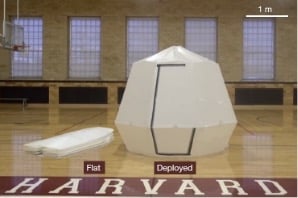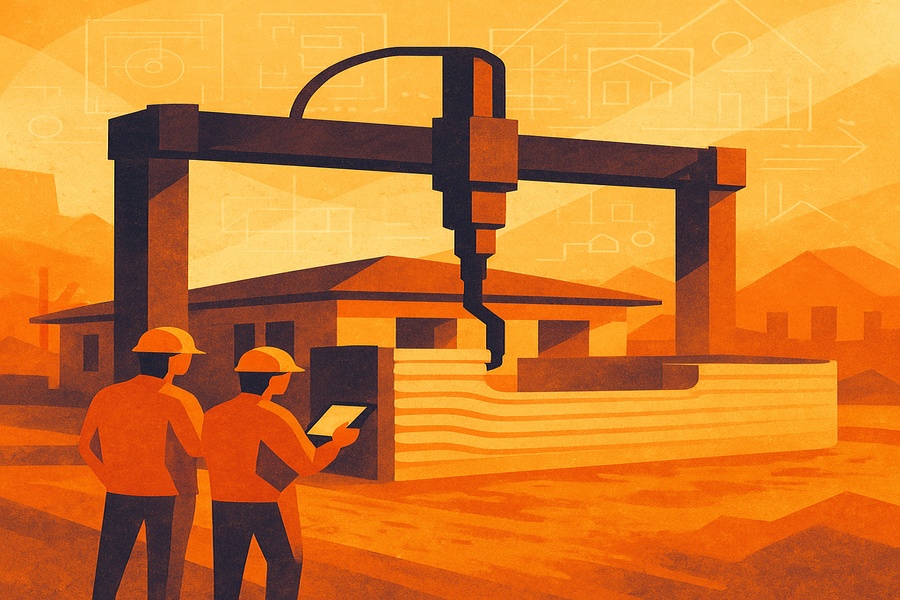Illustrated by Lindsay Gruetzmacher
In stage 7 of the 2016 Tour de France, Adam Yates was 10 seconds ahead of the main group with just 1,000 meters to the finish of the world’s most prestigious bicycle race. Just as he passed under an inflatable archway marking the race’s final kilometer, all hell broke loose.
A spectator had become entangled with something—either the power cord that supplied the air compressor or legs of the structure itself—and caused the entire archway to rapidly deflate and come crashing down onto Yates.
While he ultimately walked away from the crash with relatively minor injuries, the incident highlighted an obvious but very real vulnerability for inflatable structures: You have to keep them inflated.
But what if you didn’t?
That’s the question at the heart of a new paper published earlier this year in Nature, which draws inspiration from the Japanese art of origami to create inflatable structures that hold their shape even when the air supply is cut off.
Aside from Tour de France distance markers, deployable structures are important in many corners of construction and engineering. From retractable stadium roofs to disaster housing relief, the world needs architecture that is easy to move and set up.
“How can we think about keeping them up without the need for additional components?” asked Katia Bertoldi, a professor of applied mechanics at Harvard University and one of the paper’s authors. “Origami provides a viable platform to create forms—to go from a flat to a 3D form.”
The library of shapes that can be constructed using origami is enormous, but for the purpose of creating these deployable structures, Bertoldi and her colleagues chose to focus on using triangular and rectangular faces in their designs. Using some basic geometry, the team created a computer library of potential inflatable structures including wedges, polyhedron tents—and, yes, arches.

All of these shapes have what the scientists call “bi-stability,” meaning they have a stable flat shape and a stable inflated shape that holds even when the air pressure is removed. From there, the team went on to make some of these shapes in real life to prove that the concept worked at scale.
So far, they’ve brought several of their designs to life using corrugated plastic and adhesive tape for an air-tight seal. Especially impressive is the two-meter-tall tent structure. It’s easy to imagine a tent like this being deployed in the wake of a disaster for short-term housing for displaced people. Bertoldi said that’s certainly one application they have in mind.
But before the next round of climate crisis refugees can be housed in a blow-up pod, the researchers say they still need to perform some serious structural analysis. How much load can each structure withstand? What happens if it snows, for instance? What if there’s intense wind?
To that end, Bertoldi and her team are building new computer models that should allow them to simulate different materials and design shapes and provide insight into just how sturdy each shape is.












